This post may contain affiliate links. Please see our disclosure for more information.
Urad dal and corn fritters are a revelation, especially for Kapha folks that are looking for a light, satisfying dish that digests easily.
You can enjoy these yummy fritters for breakfast, lunch, supper, or even a snack.
To make them, you’ll soak the urad dal with fenugreek seeds, then grind this into a paste. Next, you mix the paste with onion, fresh herbs, lemon, spices, and corn flour to create a batter.
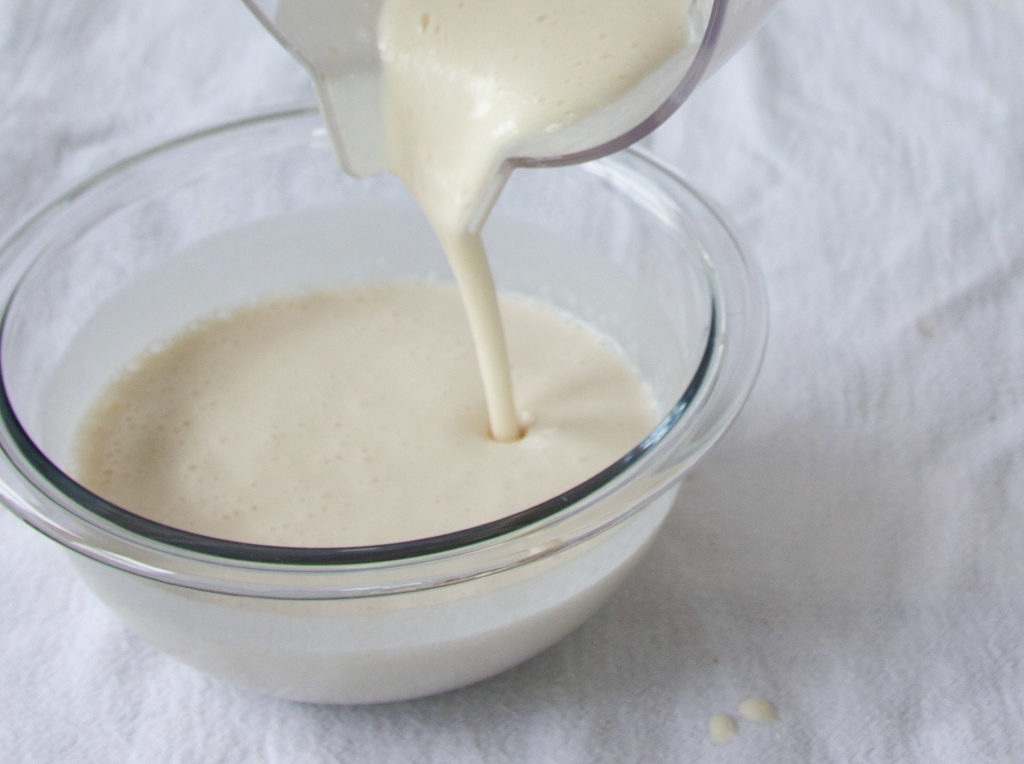
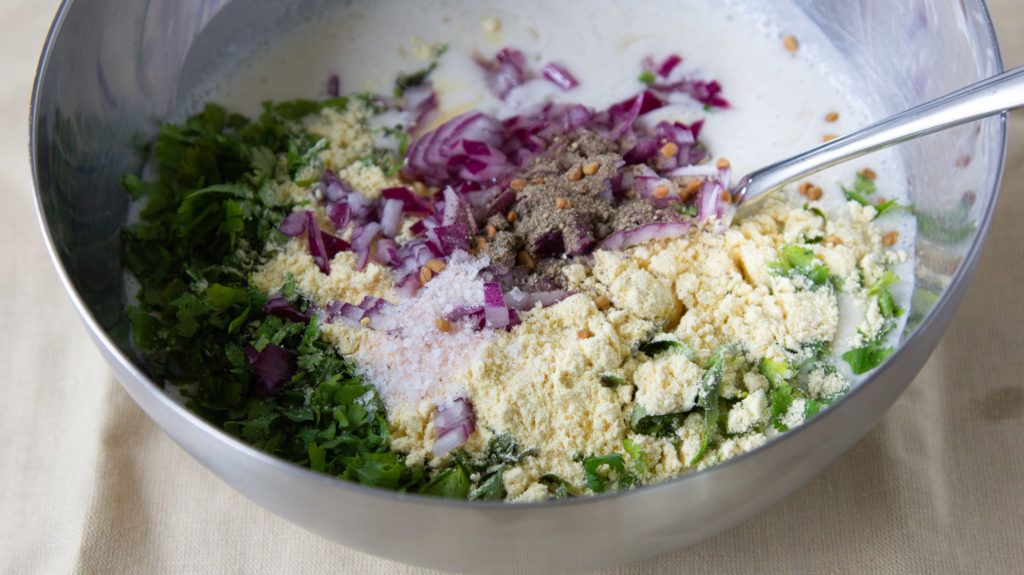
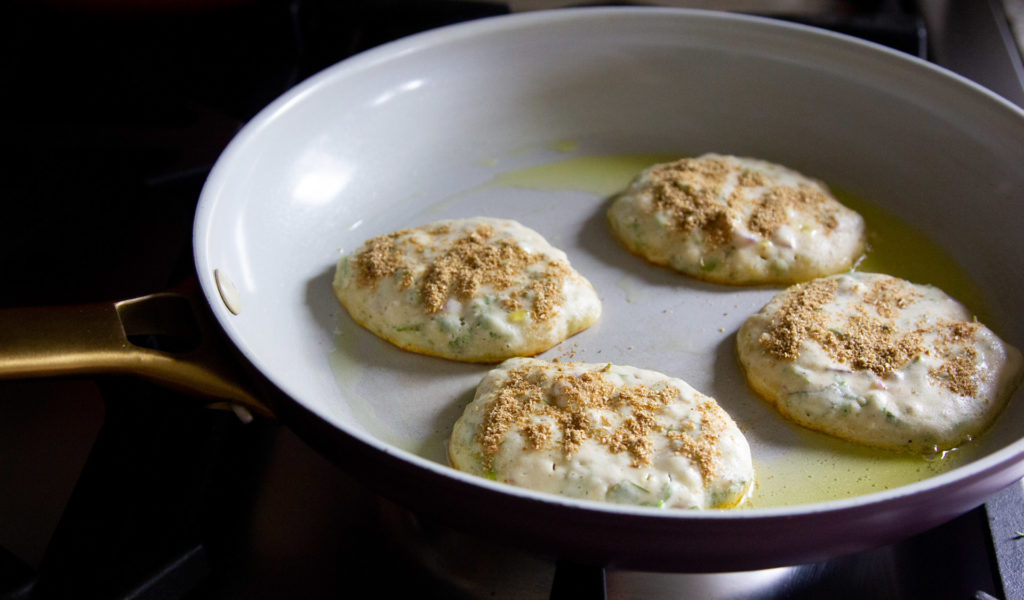
Then you fry in ghee with additional spices that form a flavorful crust. The cooking method is almost identical to pancakes.
The best part is that urad dal and corn fritters are really easy to make, and the batter will last in the fridge for a good three days.
Urad dal is the split and hulled form of black gram. Black gram is a tiny bean that’s about the same size as the moss-colored mung bean. Urad dal is also used as a spice in South Indian cooking.
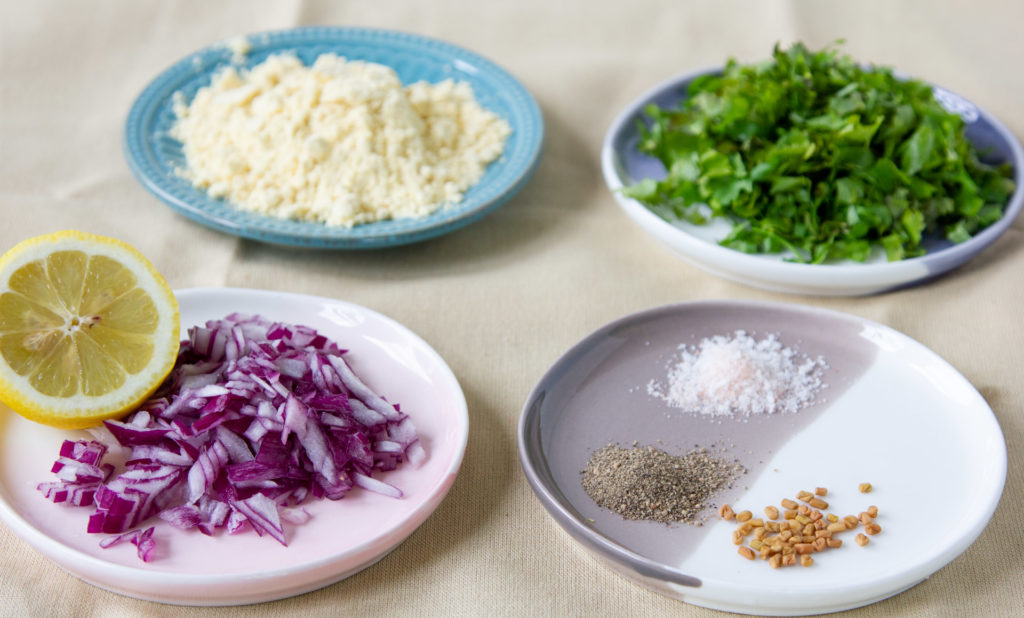
Urad dal is used to make the popular South Indian idlis and dosas, as well as uttapam, vada, and more.
All are variations of soaked and ground urad dal, which is used due to this legume’s unique and highly mucilagenous texture when ground that comes from a high soluble fiber content.
More Recipes with Urad Dal



Dipping Sauces
Urad dal and corn fritters are fantastic with a sauce, such as spicy ketchup, tamarind-date chutney, or even plain yogurt mixed with cumin, black pepper, and a bit of salt.
Urad dal, spicy ketchup and tamarind chutneys are available online or at an Indian store. I’ve noticed the online prices for Indian items are much higher than in stores, so see if you can find an Indian store in your area to pick up these yummy treats.
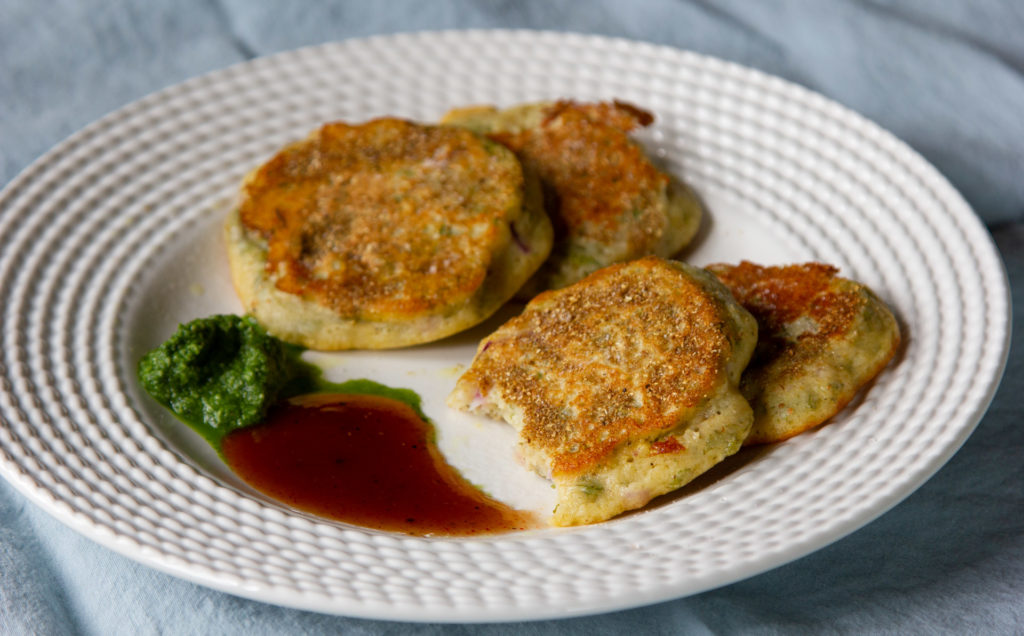
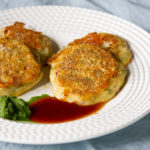
Recipe for Urad Dal and Corn Fritters
Ingredients
to soak and grind
- 1/2 cup urad dal rinsed and soaked in cold water for 4 hours, or overnight
- 1/8 teaspoon fenugreek seed soaked with the urad dal
to mix into the batter
- 2 tablespoons red onion minced
- 1/2 cup parsley or cilantro chopped
- 1/2 lemon freshly squeezed
- 1/4 teaspoon Himalayan pink salt
- 1/4 teaspoon black pepper
- 1/4 cup corn flour
to cook the fritters
- 2 teaspoons ghee
- 1 teaspoon coriander powder (see notes)
Instructions
- Rinse the urad dal 3-5 times with cold water, then leave to soak with the fenugreek seeds for 4 hours or overnight. Drain off soaking water and blend in a blender with 1 cup water until creamy-smooth. Transfer to a mixing bowl.
- Add minced red onion, chopped parsley or cilantro, lemon juice, salt, black pepper, and corn flour. Mix well.
- Heat ghee in a large skillet on medium heat. Turn heat to medium-low. Use a large spoon or ladle to transfer 1/4 cup portions into the skillet. Top with a generous portion of coriander or another spice.
- When you notice the first side starts to look golden brown, use a spatula to turn each fritter. Cook the second side until golden brown. If you notice for some reason that the fritters aren’t cooked all the way through, you can cover with a lid to steam the fritters for.
- Serve hot. Sprinkle with extra salt and pepper, and a squeeze of lemon.

Not sure what went wrong, but the batter was very thin. The fritters were more like crepes. I should probably have added a little more corn flour. Even with the thin batter the “fritters” needed a very long cook time. I wonder if it would help to cook the urad dal after soaking and before pureeing.
Hi Kathy, Thanks for your feedback. Adding more corn flour sounds like a good plan. Maybe your flour wasn’t as absorbant as mine. Maybe you got some extra water when washing the parsley or something. For cooking, be sure to use low heat so that the dal cooks through before the surface gets too dark. If cooking dal first, it reminds me of repurposed khichdi. If it’s thick, it can be formed into patties. You could try it. This recipe is inspired by the South Indian dosa, where urad dal and rice are soaked, ground to a paste, then fermented. A dosa is thinner, and the thinner consistency will result in a more cooked (and crispy) dal. Try it again until you get it just right for you. — Andrea